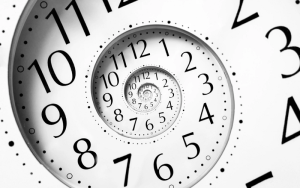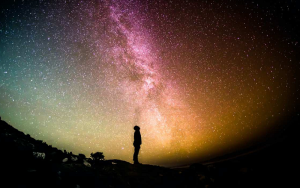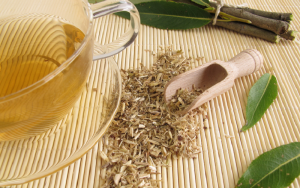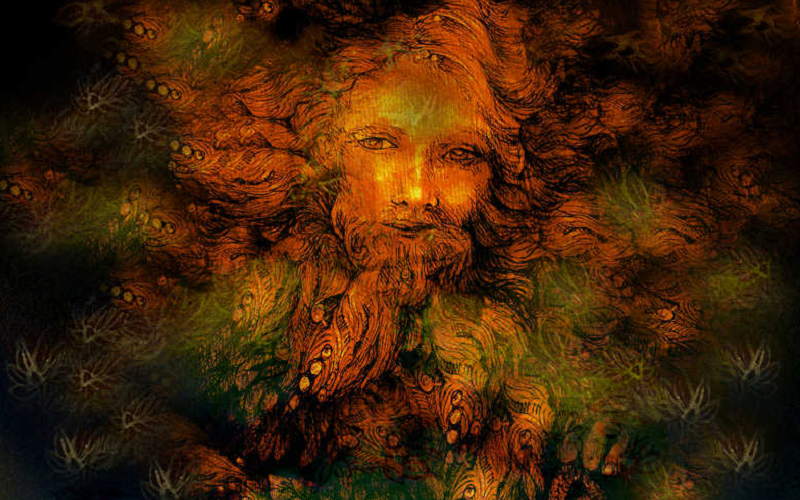
In the whirlwind pace of the 21st century, many people find themselves yearning for a spiritual connection that resonates with their values and concerns. Enter the world of Druidry — a spiritual path rooted in ancient Celtic wisdom that reveres nature and celebrates harmony. But what does Druidry look like today, and how can this age-old wisdom inform and enhance our modern lives? Here we demystify the practice of Druidry, elucidate its historical roots, and demonstrate how its principles can guide us toward a more fulfilling, balanced, and eco-conscious existence.
Contents
History and Roots of Druidry
Before delving into the modern practice of Druidry, it’s crucial to appreciate its historical roots. After all, understanding the origin of a tradition gives us valuable insights into its evolution and its potential relevance to our lives today.
Ancient Druids in Celtic Societies
The Druids held esteemed positions in the ancient Celtic societies of Britain and Gaul (modern-day France). They were not merely religious figures but served as jurists, lore-keepers, healers, and advisors to kings. The term ‘Druid’ is believed to derive from the Celtic words meaning ‘oak’ and ‘knowledge’, reflecting their profound connection with nature and wisdom.
Historical accounts of the Druids are limited and somewhat fragmentary, coming primarily from Roman writers and later Irish Christian scribes. The Druids themselves did not leave written records as their teachings and wisdom were passed orally. This has resulted in a certain level of mystery surrounding the details of their practices and beliefs.
Spiritual and Cultural Importance of Druidry in Celtic Culture
Despite the gaps in our understanding, it’s clear that the Druids played a vital role in Celtic culture. They presided over religious ceremonies, interpreted omens, and served as the guardians of traditions and knowledge. Their teachings encompassed a broad spectrum, including philosophy, astronomy, geometry, healing arts, and law. It is believed that they held a deep reverence for nature and viewed it as a manifestation of the divine.
The teachings of the Druids exerted a profound influence on Celtic societies until the Roman conquests and later the advent of Christianity. These forces pushed the practice of Druidry to the fringes of society, and by the middle ages, the Druid tradition was all but extinguished.
Transition to Modern Druidry
The revival of interest in Druidry began in the 17th and 18th centuries, with a resurgence of interest in Celtic heritage during the Romantic period. This was largely driven by a fascination with the Druids’ legendary wisdom and their perceived connection with nature. However, it’s worth noting that the modern interpretation of Druidry is not a direct continuation of ancient practices. Instead, it represents a reimagining and reinterpretation of what we know about the Druids, shaped by contemporary concerns and values.
Over the past few centuries, Druidry has evolved into a vibrant spiritual path with practitioners worldwide. While it maintains a strong link to its Celtic roots, it also draws on insights from other spiritual traditions and embraces the diversity of individual spiritual experiences. This transition has allowed Druidry to remain relevant in the modern world, offering a spiritual path that values nature, personal growth, and the wisdom of the ancients [1].
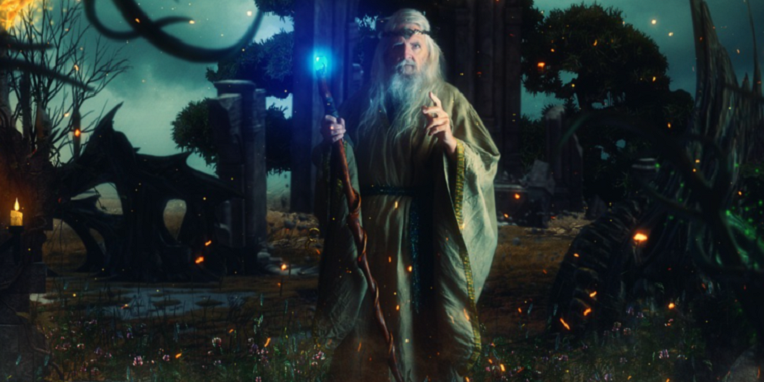
Understanding Druidry in the 21st Century
Now we turn our attention to its contemporary manifestations. What does it mean to practice Druidry in the 21st century? How has this ancient path evolved to address modern spiritual needs and societal challenges?
Misconceptions and Clarifications
As with many spiritual paths rooted in antiquity, there are numerous misconceptions surrounding Druidry. One common misconception is that Druidry is confined to those of Celtic descent. While it indeed draws from Celtic traditions, Druidry is a spiritual path open to anyone who feels a connection to its principles, regardless of their cultural or ethnic background.
Another misconception is that Druidry involves worshipping ancient Celtic deities. While some Druids may choose to honor these deities, it’s not a requisite part of the practice. Druidry is more about a deep reverence for nature, the cycles of life, and the interconnectedness of all beings.
It’s also important to clarify that Druidry is not a dogmatic religion. It doesn’t espouse a fixed set of beliefs or require allegiance to a specific doctrine. Rather, it encourages individual exploration, interpretation, and spiritual growth [2].
Key Aspects of Modern Druidry
Reverence for Nature
At the heart of Druidry lies a profound respect for nature. Druids view nature as a manifestation of the divine and a source of wisdom and healing. This reverence extends to all forms of life, fostering a deep sense of interconnectedness and responsibility towards the earth and its creatures.
Connection to Celtic Culture and Heritage
While Druidry is open to all, it does maintain a strong connection to Celtic culture and heritage. The myths, legends, and historical accounts of the ancient Celts serve as a rich source of inspiration and guidance. Seasonal celebrations, symbols, and rituals often draw upon Celtic traditions, creating a vibrant link to this ancient culture [3].
Individual Spiritual Expression
Druidry acknowledges the diversity of individual spiritual experiences and expressions. There are no strict doctrines or mandatory practices. Instead, Druids are encouraged to explore and develop their unique spiritual paths, drawing on personal experiences, intuition, and the wisdom of the Druidic tradition.
Similarities and Differences with Other Spiritual Practices
Modern Druidry shares similarities with other spiritual and philosophical traditions, particularly those with a focus on nature and personal spiritual growth, such as Paganism, Wicca, and some forms of New Age spirituality. However, it maintains a distinct identity through its connection to Celtic heritage and its emphasis on individual spiritual exploration.
In contrast to monotheistic religions, Druidry doesn’t recognize a singular, supreme deity. Instead, it holds a more pantheistic or animistic view, recognizing divinity in all aspects of nature and the cosmos. This doesn’t mean Druids can’t incorporate elements of other religious beliefs into their practice—many do—but it illustrates the distinct perspective that Druidry offers [4].
Understanding Druidry in the 21st century involves recognizing both its roots in the ancient world and its adaptation to modern life. While the specific practices of individual Druids may vary, the unifying themes of reverence for nature, connection to Celtic heritage, and individual spiritual exploration form the core of this vibrant spiritual path.
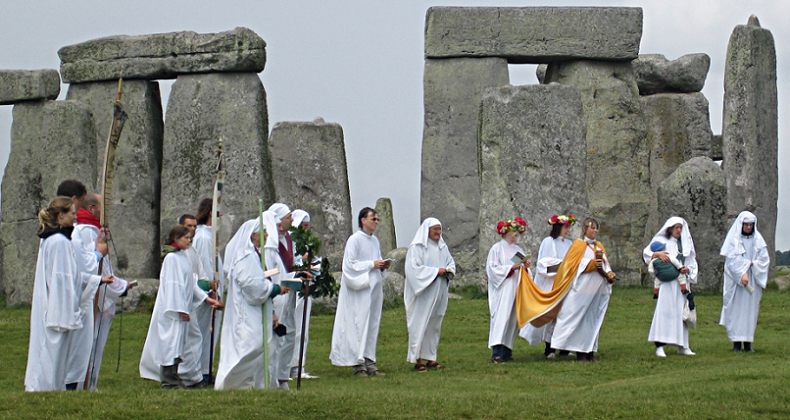
Applying Ancient Wisdom to Modern Lives
Having understood the key aspects of modern Druidry, it’s time to go deeper into how this ancient wisdom can enrich our modern lives. After all, the true test of any spiritual path lies not only in its philosophical depth but also in its practical application to daily living.
Druidic Principles in Everyday Life
Druidic principles offer timeless wisdom that can serve as a compass in our day-to-day lives. Here, we’ll discuss three key principles: respect for all life, balance and harmony, and personal growth and self-realization.
Respect for All Life
Respect for all life is a fundamental Druidic principle, born out of a deep reverence for nature. Applying this principle in everyday life encourages us to make choices that honor and protect all forms of life. This could include adopting a more plant-based diet, using cruelty-free products, or participating in conservation efforts.
Balance and Harmony
Druidry emphasizes the importance of balance and harmony, both internally and with the world around us. We can embody this principle by striving for balance in our work and personal lives, seeking harmonious relationships, and nurturing a healthy mind-body connection.
Personal Growth and Self-Realization
Druidry values personal growth and the ongoing quest for self-realization. This involves fostering self-awareness, cultivating our talents and strengths, and continually seeking to expand our understanding and empathy. Regular reflection, meditation, and lifelong learning are some ways we can put this principle into practice.
Learning from Druidic Rituals and Practices
Beyond these principles, Druidic rituals and practices also offer meaningful ways to enhance our everyday lives.
The Importance of Rituals
Rituals in Druidry, such as observing the phases of the moon or marking the changing of seasons, help to foster a deep connection with the natural world and its cycles. Incorporating such rituals into our routine can enhance our mindfulness, instill a sense of peace, and help us align with nature’s rhythms.
Seasonal Celebrations and Festivals
Druids observe seasonal celebrations known as the “Wheel of the Year,” which mark the solstices, equinoxes, and points in between. Participating in these celebrations can help us to feel more in tune with nature’s cycles, recognize the interconnectedness of all life, and bring more joy and fulfillment into our lives [5].
The Role of Meditation and Inner Reflection
Meditation and inner reflection are important practices in Druidry, aiding in self-discovery and spiritual growth. Regular meditation can reduce stress, improve mental clarity, and enhance our overall wellbeing. Meanwhile, introspection can lead to greater self-understanding and personal development.
Nature Connection and Ecological Awareness
One of the most profound ways Druidry can impact our modern lives is through fostering a deeper connection with nature and a commitment to ecological stewardship.
Embracing Sustainability in Daily Life
As stewards of the Earth, Druids strive to live sustainably, minimizing their environmental impact and promoting biodiversity. This can translate to our lives in numerous ways, from reducing waste and conserving water to supporting renewable energy and sustainable agriculture.
Community Building and Activism
Druidry also encourages community engagement and activism. This might involve participating in local conservation efforts, advocating for climate action, or fostering a sense of community around shared ecological values.
The Relevance of Nature Spirituality in Modern Context
In an era of environmental crisis, the nature spirituality of Druidry provides a much-needed perspective. By fostering a deep reverence for the earth and all its inhabitants, Druidry inspires us to view nature not as a resource to be exploited, but as a sacred entity to be respected and protected. In this sense, Druidry offers a powerful counter-narrative to the mindset of consumption and detachment from nature that has contributed to our current ecological challenges [6].
By integrating the wisdom and practices of Druidry into our lives, we can foster a more harmonious relationship with the natural world, cultivate personal growth, and contribute to the collective effort towards ecological balance. Far from being a relic of the past, Druidry offers timeless wisdom that is remarkably relevant to the challenges and opportunities of the 21st century.
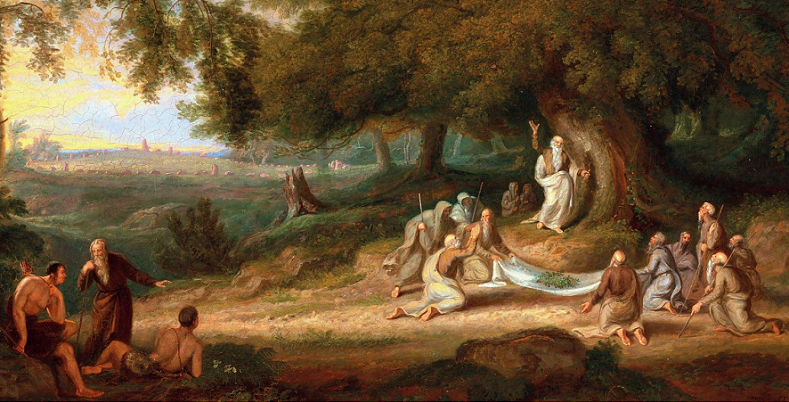
Case Studies: Stories of Modern Druids
To truly appreciate the impact of Druidry in the 21st century, it’s helpful to explore the stories of individuals who have incorporated Druidic principles and practices into their lives. These case studies provide a glimpse into the diverse ways people engage with Druidry today, offering practical examples of how ancient wisdom can indeed illuminate modern lives.
Case Study 1: Sarah – The Urban Druid
Sarah, a successful architect living in a bustling city, felt an ever-growing disconnect from nature amidst her urban surroundings. She stumbled upon Druidry in her search for a path that could help her bridge this gap. Today, she identifies as an urban Druid, finding ways to connect with nature within her city environment.
Sarah practices mindfulness walks in her local park, observing the changes in flora and fauna throughout the year. She has created a small sacred space in her apartment, filled with potted plants, stones, and symbols that represent her connection to the natural world. She also applies her Druidic principles in her work, advocating for more green spaces and environmentally friendly designs in her architectural projects.
Case Study 2: Mike – The Activist Druid
Mike has always had a passion for environmental activism. When he discovered Druidry, he found a spiritual framework that echoed his deep respect for nature and commitment to environmental justice. As a modern Druid, Mike’s activism is not just a political stance but an expression of his spiritual values.
He uses his Druidic practices, such as meditation and seasonal rituals, to stay grounded and focused in his activism work. He also organizes community clean-up events and advocates for policies that protect local ecosystems. Mike views his activism as an essential part of his Druidic path—a way to give back to the Earth and uphold his commitment to all life forms.
Case Study 3: Emma – The Scholar Druid
Emma, a university professor specializing in Celtic history, found in Druidry a spiritual path that dovetailed with her academic interests. For her, Druidry is a way to bring her intellectual pursuits into a deeply personal and spiritual realm.
Emma integrates Druidic practices into her daily routine—starting her day with a moment of gratitude, taking mindful walks, and marking the seasonal celebrations. She also uses her scholarly skills to contribute to the Druidic community, offering classes and workshops on Celtic history and its relevance to modern Druidry. For Emma, Druidry not only enriches her personal life but also brings a fresh, inspiring dimension to her academic work.
References
[1] 21st Century Druidry – The facts
[2] Druidry: Recent History
[3] 21st-century druids: No animal sacrifices, but connected to community, history
[4] An introduction to 21st-century Druidry: Exploring the modern revival and the motivations behind it
[5] Who were the Druids? A history of Druidism in Britain
[6] The mysterious history of druids, ancient ‘mediators between humans and the gods’

